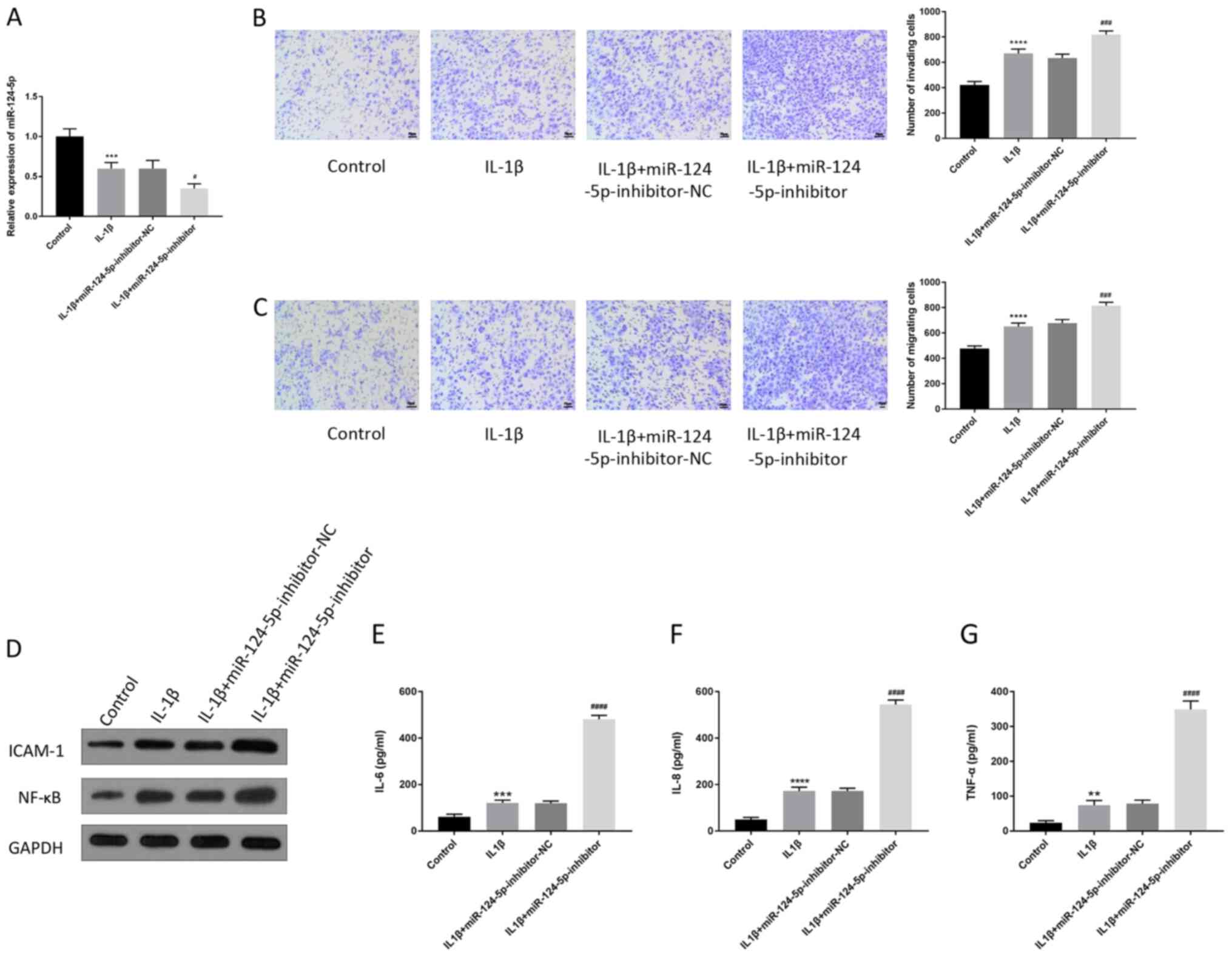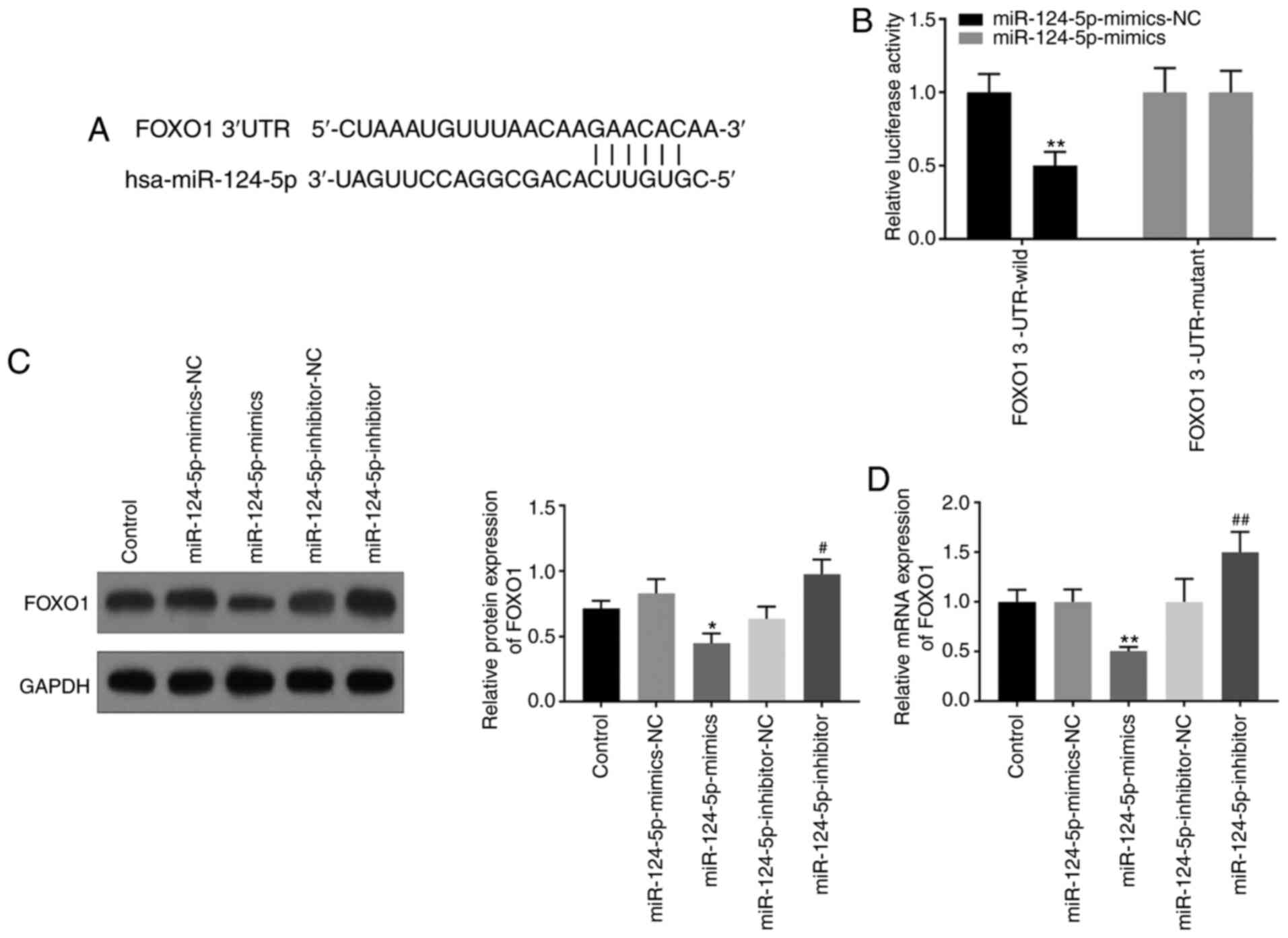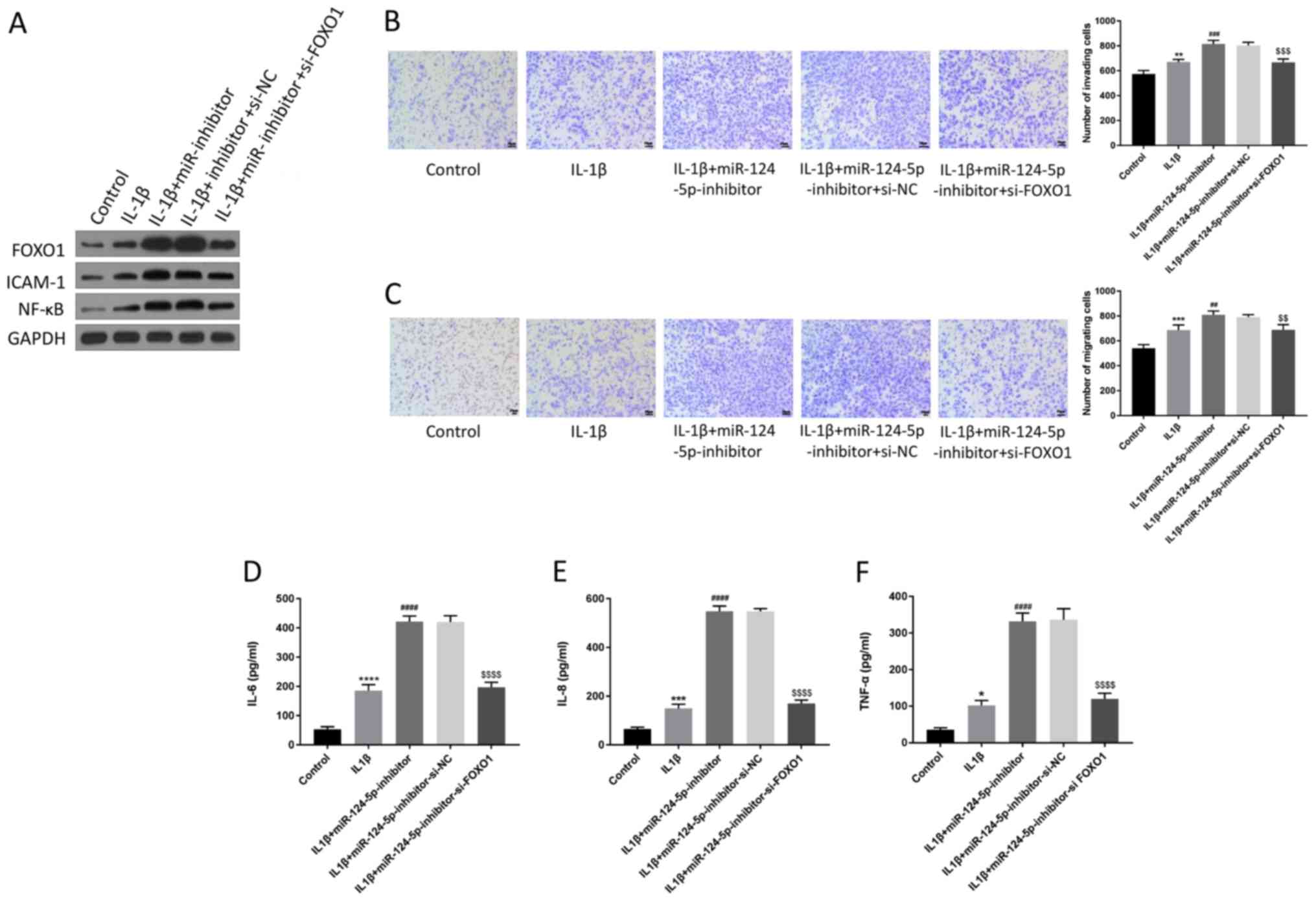|
1
|
Cebral JR and Raschi M: Suggested
connections between risk factors of intracranial aneurysms: A
review. Ann Biomed Eng. 41:1366–1383. 2013.PubMed/NCBI View Article : Google Scholar
|
|
2
|
Sadasivan C, Fiorella DJ, Woo HH and
Lieber BB: Physical factors effecting cerebral aneurysm
pathophysiology. Ann Biomed Eng. 41:1347–1365. 2013.PubMed/NCBI View Article : Google Scholar
|
|
3
|
Kataoka H: Molecular mechanisms of the
formation and progression of intracranial aneurysms. Neurol Med
Chir (Tokyo). 55:214–229. 2015.PubMed/NCBI View Article : Google Scholar
|
|
4
|
Alg VS, Sofat R, Houlden H and Werring DJ:
Genetic risk factors for intracranial aneurysms: A meta-analysis in
more than 116,000 individuals. Neurology. 80:2154–2165.
2013.PubMed/NCBI View Article : Google Scholar
|
|
5
|
Juvela S: Prevalence of and risk factors
for intracranial aneurysms. Lancet Neurol. 10:595–597.
2011.PubMed/NCBI View Article : Google Scholar
|
|
6
|
Chalouhi N, Hoh BL and Hasan D: Review of
cerebral aneurysm formation, growth, and rupture. Stroke.
44:3613–3622. 2013.PubMed/NCBI View Article : Google Scholar
|
|
7
|
Wei L, Wang Q, Zhang Y, Yang C, Guan H,
Chen Y and Sun Z: Identification of key genes, transcription
factors and microRNAs involved in intracranial aneurysm. Mol Med
Rep. 17:891–897. 2018.PubMed/NCBI View Article : Google Scholar
|
|
8
|
Wang WH, Wang YH, Zheng LL, Li XW, Hao F
and Guo D: MicroRNA-29a: A potential biomarker in the development
of intracranial aneurysm. J Neurol Sci. 364:84–89. 2016.PubMed/NCBI View Article : Google Scholar
|
|
9
|
Hosaka K and Hoh BL: Inflammation and
cerebral aneurysms. Transl Stroke Res. 5:190–198. 2014.PubMed/NCBI View Article : Google Scholar
|
|
10
|
Kanematsu Y, Kanematsu M, Kurihara C, Tada
Y, Tsou TL, van Rooijen N, Lawton MT, Young WL, Liang EI, Nuki Y
and Hashimoto T: Critical roles of macrophages in the formation of
intracranial aneurysm. Stroke. 42:173–178. 2011.PubMed/NCBI View Article : Google Scholar
|
|
11
|
Aoki T, Kataoka H, Ishibashi R, Nozaki K,
Egashira K and Hashimoto N: Impact of monocyte chemoattractant
protein-1 deficiency on cerebral aneurysm formation. Stroke.
40:942–951. 2009.PubMed/NCBI View Article : Google Scholar
|
|
12
|
Aoki T, Kataoka H, Nishimura M, Ishibashi
R, Morishita R and Miyamoto S: Ets-1 promotes the progression of
cerebral aneurysm by inducing the expression of MCP-1 in vascular
smooth muscle cells. Gene Ther. 17:1117–1123. 2010.PubMed/NCBI View Article : Google Scholar
|
|
13
|
Aoki T, Yamamoto K, Fukuda M, Shimogonya
Y, Fukuda S and Narumiya S: Sustained expression of MCP-1 by low
wall shear stress loading concomitant with turbulent flow on
endothelial cells of intracranial aneurysm. Acta Neuropathol
Commun. 4(48)2016.PubMed/NCBI View Article : Google Scholar
|
|
14
|
Bartel DP: MicroRNAs: Target recognition
and regulatory functions. Cell. 136:215–233. 2009.PubMed/NCBI View Article : Google Scholar
|
|
15
|
Chen X, Zhao Y, Wang F, Bei Y, Xiao J and
Yang C: MicroRNAs in liver regeneration. Cell Physiol Biochem.
37:615–628. 2015.PubMed/NCBI View Article : Google Scholar
|
|
16
|
Ameres SL and Zamore PD: Diversifying
microRNA sequence and function. Nat Rev Mol Cell Biol. 14:475–488.
2013.PubMed/NCBI View
Article : Google Scholar
|
|
17
|
Pal AS and Kasinski AL: Animal models to
study microRNA function. Adv Cancer Res. 135:53–118.
2017.PubMed/NCBI View Article : Google Scholar
|
|
18
|
Henninger N and Mayasi Y: Nucleic acid
therapies for ischemic stroke. Neurotherapeutics. 16:299–313.
2019.PubMed/NCBI View Article : Google Scholar
|
|
19
|
Martinez B and Peplow PV: Blood microRNAs
as potential diagnostic and prognostic markers in cerebral ischemic
injury. Neural Regen Res. 11:1375–1378. 2016.PubMed/NCBI View Article : Google Scholar
|
|
20
|
Chu-Tan JA, Rutar M, Saxena K, Aggio-Bruce
R, Essex RW, Valter K, Jiao H, Fernando N, Wooff Y, Madigan MC, et
al: MicroRNA-124 dysregulation is associated with retinal
inflammation and photoreceptor death in the degenerating retina.
Invest Ophthalmol Vis Sci. 59:4094–4105. 2018.PubMed/NCBI View Article : Google Scholar
|
|
21
|
Kawano S and Nakamachi Y: miR-124a as a
key regulator of proliferation and MCP-1 secretion in synoviocytes
from patients with rheumatoid arthritis. Ann Rheum Dis. 70 (Suppl
1):i88–i91. 2011.PubMed/NCBI View Article : Google Scholar
|
|
22
|
Sun Y, Luo ZM, Guo XM, Su DF and Liu X: An
updated role of microRNA-124 in central nervous system disorders: A
review. Front Cell Neurosci. 9(193)2015.PubMed/NCBI View Article : Google Scholar
|
|
23
|
Dong N, Xu B, Shi H and Lu Y: miR-124
regulates amadori-glycated albumin-induced retinal microglial
activation and inflammation by targeting Rac1. Invest Ophthalmol
Vis Sci. 57:2522–2532. 2016.PubMed/NCBI View Article : Google Scholar
|
|
24
|
Sun L, Zhao M, Zhang J, Lv M, Li Y, Yang
X, Liu A and Wu Z: miR-29b downregulation induces phenotypic
modulation of vascular smooth muscle cells: Implication for
intracranial aneurysm formation and progression to rupture. Cell
Physiol Biochem. 41:510–518. 2017.PubMed/NCBI View Article : Google Scholar
|
|
25
|
Signorelli F, Sela S, Gesualdo L, Chevrel
S, Tollet F, Pailler-Mattei C, Tacconi L, Turjman F, Vacca A and
Schul DB: Hemodynamic stress, inflammation, and intracranial
aneurysm development and rupture: A systematic review. World
Neurosurg. 115:234–244. 2018.PubMed/NCBI View Article : Google Scholar
|
|
26
|
Wang Y, Huang C, Chintagari NR, Xi D, Weng
T and Liu L: miR-124 regulates fetal pulmonary epithelial cell
maturation. Am J Physiol Lung Cell Mol Physiol. 309:L400–L413.
2015.PubMed/NCBI View Article : Google Scholar
|
|
27
|
Chen Q, Lu G, Cai Y, Li Y, Xu R, Ke Y and
Zhang S: miR-124-5p inhibits the growth of high-grade gliomas
through posttranscriptional regulation of LAMB1. Neuro Oncol.
16:637–651. 2014.PubMed/NCBI View Article : Google Scholar
|
|
28
|
Liu P, Shi Y, Fan Z, Zhou Y, Song Y, Liu
Y, Yu G, An Q and Zhu W: Inflammatory smooth muscle cells induce
endothelial cell alterations to influence cerebral aneurysm
progression via regulation of integrin and VEGF expression. Cell
Transplant. 28:713–722. 2019.PubMed/NCBI View Article : Google Scholar
|
|
29
|
Livak KJ and Schmittgen TD: Analysis of
relative gene expression data using real-time quantitative PCR and
the 2(-Delta Delta C(T)) method. Methods. 25:402–408.
2001.PubMed/NCBI View Article : Google Scholar
|
|
30
|
Liang Y, Zhu D, Zhu L, Hou Y, Hou L, Huang
X, Li L, Wang Y, Li L, Zou H, et al: Dichloroacetate overcomes
oxaliplatin chemoresistance in colorectal cancer through the
miR-543/PTEN/Akt/mTOR pathway. J Cancer. 10:6037–6047.
2019.PubMed/NCBI View Article : Google Scholar
|
|
31
|
Tang Z, Gong Z and Sun X: LncRNA DANCR
involved osteolysis after total hip arthroplasty by regulating
FOXO1 expression to inhibit osteoblast differentiation. J Biomed
Sci. 25(4)2018.PubMed/NCBI View Article : Google Scholar
|
|
32
|
Skaria T, Bachli E and Schoedon G: RSPO3
impairs barrier function of human vascular endothelial monolayers
and synergizes with pro-inflammatory IL-1. Mol Med.
24(45)2018.PubMed/NCBI View Article : Google Scholar
|
|
33
|
Chalouhi N, Ali MS, Jabbour PM,
Tjoumakaris SI, Gonzalez LF, Rosenwasser RH, Koch WJ and Dumont AS:
Biology of intracranial aneurysms: Role of inflammation. J Cereb
Blood Flow Metab. 32:1659–1676. 2012.PubMed/NCBI View Article : Google Scholar
|
|
34
|
Tulamo R, Frösen J, Hernesniemi J and
Niemelä M: Inflammatory changes in the aneurysm wall: A review. J
Neurointerv Surg. 2:120–130. 2010.PubMed/NCBI View Article : Google Scholar
|
|
35
|
Karin M and Ben-Neriah Y: Phosphorylation
meets ubiquitination: The control of NF-[kappa]B activity. Annu Rev
Immunol. 18:621–663. 2000.PubMed/NCBI View Article : Google Scholar
|
|
36
|
Catrysse L and van Loo G: Inflammation and
the metabolic syndrome: The tissue-specific functions of NF-κB.
Trends Cell Biol. 27:417–429. 2017.PubMed/NCBI View Article : Google Scholar
|
|
37
|
Cheng WT and Wang N: Correlation between
MMP-2 and NF-κ B expression of intracranial aneurysm. Asian Pac J
Trop Med. 6:570–573. 2013.PubMed/NCBI View Article : Google Scholar
|
|
38
|
Aoki T, Kataoka H, Nishimura M, Ishibashi
R, Morishita R and Miyamoto S: Regression of intracranial aneurysms
by simultaneous inhibition of nuclear factor-κB and Ets with
chimeric decoy oligodeoxynucleotide treatment. Neurosurgery.
70:1534–1543. 2012.PubMed/NCBI View Article : Google Scholar
|
|
39
|
Sun W, Watanabe Y and Wang ZQ: Expression
and significance of ICAM-1 and its counter receptors LFA-1 and
Mac-1 in experimental acute pancreatitis of rats. World J
Gastroenterol. 12:5005–5009. 2006.PubMed/NCBI View Article : Google Scholar
|
|
40
|
Yagi K, Tada Y, Kitazato KT, Tamura T,
Satomi J and Nagahiro S: Ibudilast inhibits cerebral aneurysms by
down-regulating inflammation-related molecules in the vascular wall
of rats. Neurosurgery. 66:551–559. 2010.PubMed/NCBI View Article : Google Scholar
|
|
41
|
Ali MS, Starke RM, Jabbour PM, Tjoumakaris
SI, Gonzalez LF, Rosenwasser RH, Owens GK, Koch WJ, Greig NH and
Dumont AS: TNF-α induces phenotypic modulation in cerebral vascular
smooth muscle cells: Implications for cerebral aneurysm pathology.
J Cereb Blood Flow Metab. 33:1564–1573. 2013.PubMed/NCBI View Article : Google Scholar
|
|
42
|
Starke RM, Chalouhi N, Jabbour PM,
Tjoumakaris SI, Gonzalez LF, Rosenwasser RH, Wada K, Shimada K,
Hasan DM, Greig NH, et al: Critical role of TNF-α in cerebral
aneurysm formation and progression to rupture. J Neuroinflammation.
11(77)2014.PubMed/NCBI View Article : Google Scholar
|
|
43
|
Yokoi T, Isono T, Saitoh M, Yoshimura Y
and Nozaki K: Suppression of cerebral aneurysm formation in rats by
a tumor necrosis factor-α inhibitor. J Neurosurg. 120:1193–1200.
2014.PubMed/NCBI View Article : Google Scholar
|
|
44
|
Aoki T, Kataoka H, Ishibashi R, Nozaki K,
Morishita R and Hashimoto N: Reduced collagen biosynthesis is the
hallmark of cerebral aneurysm: Contribution of interleukin-1beta
and nuclear factor-kappaB. Arterioscler Thromb Vasc Biol.
29:1080–1086. 2009.PubMed/NCBI View Article : Google Scholar
|
|
45
|
Garofalo M and Croce CM: MicroRNAs: Master
regulators as potential therapeutics in cancer. Annu Rev Pharmacol
Toxicol. 51:25–43. 2011.PubMed/NCBI View Article : Google Scholar
|
|
46
|
Guo X, Guo L, Ji J, Zhang J, Zhang J, Chen
X, Cai Q, Li J, Gu Q, Liu B, et al: miRNA-331-3p directly targets
E2F1 and induces growth arrest in human gastric cancer. Biochem
Biophys Res Commun. 398:1–6. 2010.PubMed/NCBI View Article : Google Scholar
|
|
47
|
Martello G, Rosato A, Ferrari F, Manfrin
A, Cordenonsi M, Dupont S, Enzo E, Guzzardo V, Rondina M, Spruce T,
et al: A microRNA targeting dicer for metastasis control. Cell.
141:1195–1207. 2010.PubMed/NCBI View Article : Google Scholar
|
|
48
|
Guo X, Jing C, Li L, Zhang L, Shi Y, Wang
J, Liu J and Li C: Down-regulation of VEZT gene expression in human
gastric cancer involves promoter methylation and miR-43c. Biochem
Biophys Res Commun. 404:622–627. 2011.PubMed/NCBI View Article : Google Scholar
|
|
49
|
Wu Y, Yao J and Feng K: miR-124-5p/NOX2
axis modulates the ROS production and the inflammatory
microenvironment to protect against the cerebral I/R injury.
Neurochem Res. 45:404–417. 2020.PubMed/NCBI View Article : Google Scholar
|
|
50
|
Malik S, Sadhu S, Elesela S, Pandey RP,
Chawla AS, Sharma D, Panda L, Rathore D, Ghosh B, Ahuja V and
Awasthi A: Transcription factor Foxo1 is essential for IL-9
induction in T helper cells. Nat Commun. 8(815)2017.PubMed/NCBI View Article : Google Scholar
|
|
51
|
Wu L, Guo F, Wu Y, Wang Q, Ma X, Zhao Y
and Qin G: The role of FoxO1 in interleukin-1β-induced
autostimulation in retina endothelial cells and retinas of diabetic
rats. Microvasc Res. 112:93–100. 2017.PubMed/NCBI View Article : Google Scholar
|


















